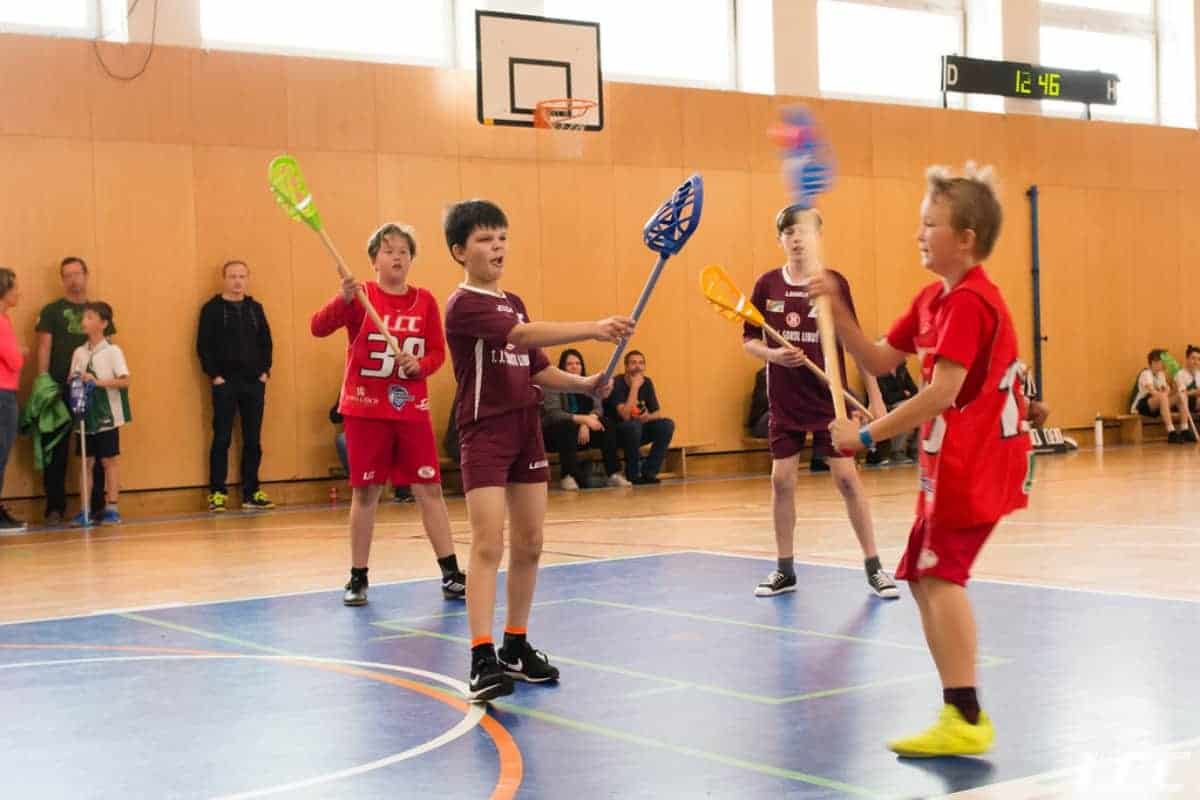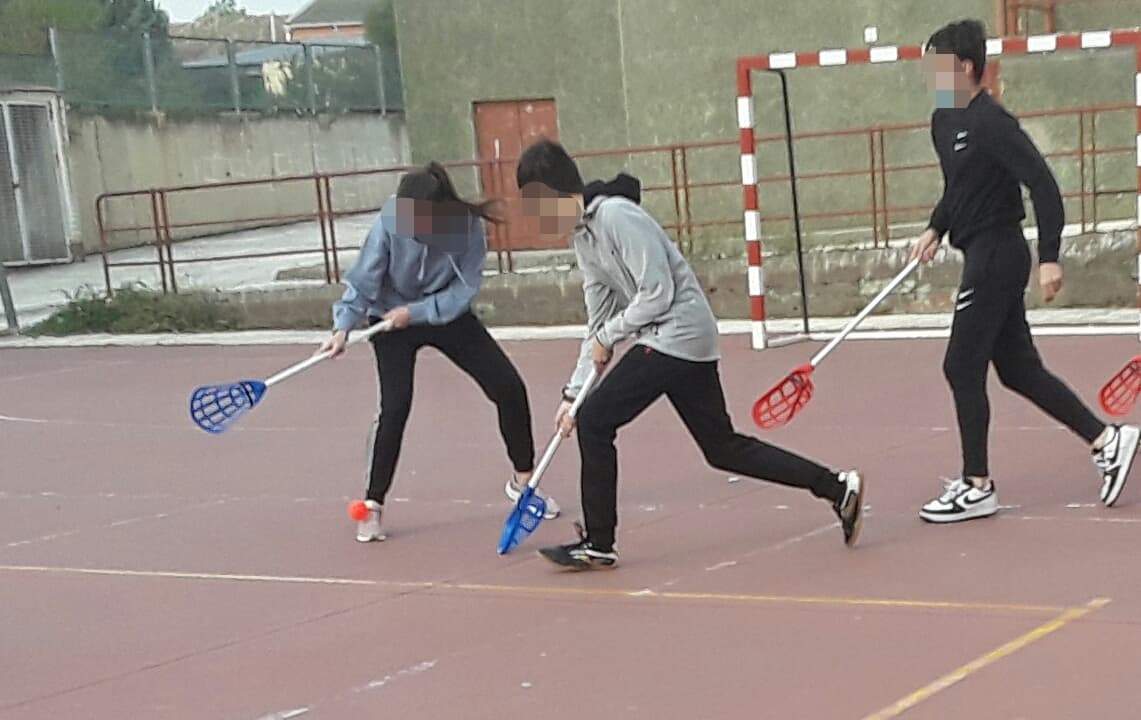The main objective of this article is to introduce the alternative sport “Intercrosse” for its implementation in physical education classes.
What is the origin of Intercrosse?
Intercrosse is a game derived from lacrosse, a sport with great tradition and history in the United States. The origin of intercrosse corresponds to a game from a tribe of Indians, who were called “Iroquois.”
The original game, called “baggataway” was a religious ritual for the Indians and also served as a training method for warriors (5).
Possibly, this is the reason why this type of game had violence as its most relevant characteristic, as contact was allowed.
The main objective of the game was to carry a ball made of baked clay, wood, or stone and deer skin to a specific area using a wooden stick ending in a hemp basket (4).
With the intention of making this practice less violent, the French settlers decided to modify certain rules of the original game, as well as introduce different elements to ensure the safety of the participants.
However, lacrosse had to continue evolving and adapting many of its characteristics to become the sport we know today (3).
Later, the Canadian Intercrosse Federation aimed to bring this sport to schools, making significant adaptations to turn it into a pedagogical content where the cooperative aspect prevails and any type of injury is reduced (1).
Intercrosse playing field
It has dimensions of 40×20 meters, corresponding to the playing field used in both handball and futsal.
This field is divided into two parts, where there is a goal area with a 2.70-meter radius, measured from the center of the goal. No attacking player can enter the goal area of the opposing team. However, they can finish their shot with the stick over that area (1).
Regarding the goals, they have dimensions of 1.20 x 1.20 meters. At 9 meters, measured from the center of the goal, is the penalty line (4).
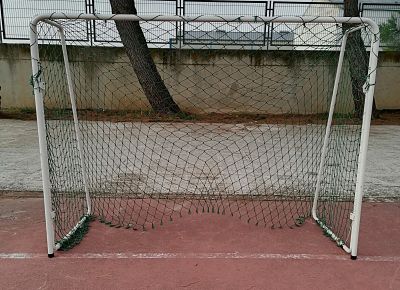
What is the equipment to play intercrosse?
There are two necessary elements to play intercrosse: stick and ball
Intercrosse stick
It is composed of two parts: the head and the shaft.
The head is made of flexible plastic materials, which prevents any possible risk of injury to the participants. Its dimensions are: 26-27.5 cm in interior length; 17-17.5 cm in maximum width; 9-10 cm in minimum width; 8-9 cm in depth (4).
In the case of the shaft, it can be made of wood, aluminum, or fiber. It has dimensions of 40-75 meters in length and around 7-8 centimeters in circumference. Its weight is between 280-380 grams (2).
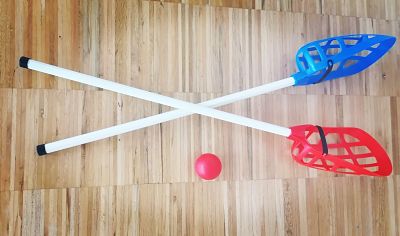
Intercrosse ball
The official ball is made of soft rubber, weighing between 80-100 grams and with a circumference of 23-27 centimeters. In the case of physical education, the balls used for floorball can be used (2).
Players and game time
A team is composed of a maximum of 12 players. During the game, each team will have 6 players on the court, including the goalkeeper (1).
Regarding game time, it is divided into 3 periods of 15 minutes with a running clock and a 3-minute break between each period. After each period, the teams switch sides of the playing field (3).
What are the basic rules of Intercrosse?
Below are some basic rules of Intercrosse in physical education (1,2,3,4):
The ball cannot be touched with the hand or any other part of the body. Only the goalkeeper can touch the ball with their hands when in their goal area, but they cannot hold it to make a pass.
The game in intercrosse starts with a coin toss, allowing the choice between ball possession or field. In the third period, the coin toss is repeated. An important aspect to highlight is that in intercrosse there is no center field throw-in after each goal, with the goalkeeper being responsible for putting the ball into play.
If the ball goes out of the field boundaries, the other team will put it into play with a pass.
A very effective technical action is “covering the ball.” That is, when the ball is free on the ground, the player who manages to cover it with the basket of their stick will gain possession for their team, with opponents having to be 2 meters away from the ball possessor.
Each team has a maximum of 30 seconds to shoot at the opposing goal, otherwise, the ball will pass to the other team.
No player can have the ball in their possession for more than 5 seconds.
When a player is in possession of the ball, they can run or pass, but they are not allowed to walk with the ball in their possession. However, pivoting is allowed as in basketball.
In Intercrosse in physical education, no type of contact is allowed, neither body to body nor stick to stick, nor stick to body. If a player commits an infraction, they will be expelled for 1 minute.
Only individual defense is allowed, with no possibility of zone defense.
Defensive players must hold the stick with both hands, except when trying to recover the ball on the ground or intercept a pass executed through the air.
Practical proposal for the development of Intercrosse in physical education
Intercrosse in physical education is presented as a motivating and novel proposal for students in physical education classes.
A possible sequence to work on this alternative sport in the secondary stage could be the following:
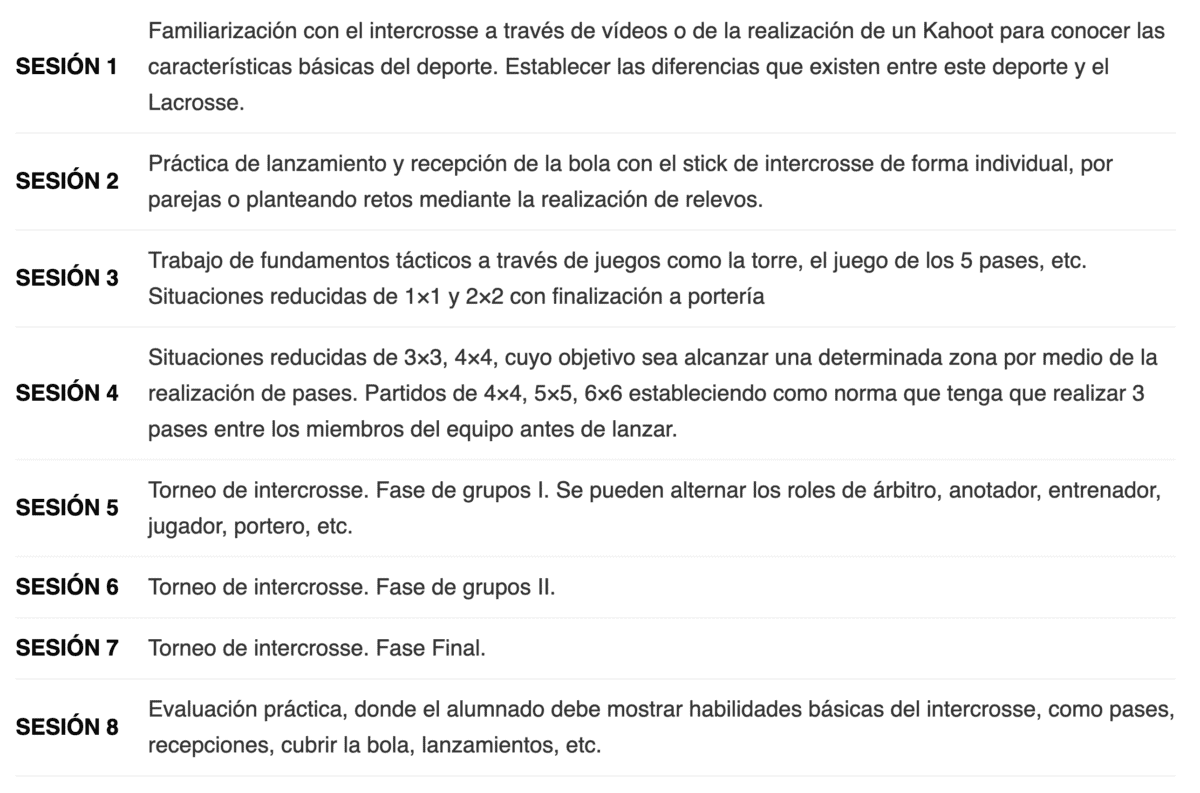
Conclusion
Introducing students to new sports proposals is a way to increase their motivation, not only in physical education classes but also towards the practice of physical-sport activities in general.
Therefore, Intercrosse in physical education is an alternative sport that contributes to this, promoting values such as teamwork, respect, tolerance, affective-social relationships, among other aspects.
Bibliographic references
- Intercrosse in physical education. https://fiicofficial.wordpress.com/. Retrieved on 09/29/2021.
- Méndez Giménez, A. (2018). New playful proposals for the curricular development of physical education. Barcelona: Paidotribo.
- Battaglia, L. (2013). Intercrosse, a school proposal. 10th Argentine Congress of Physical Education and Sciences, September 9-13, 2013, La Plata. IN: Proceedings. La Plata: UNLP. FAHCE. Department of Physical Education. Available at: https://www.memoria.fahce.unlp.edu.ar/trab_eventos/ev.3105/ev.3105.pdf
- What is Intercrosse? https://bestsportslounge.com/what-is-intercrosse. Retrieved on 10/18/2021.
- Intercrosse in physical education. http://www.intercrosse.net/tour/eng/tour2.htm. Retrieved on 10/18/2021.
